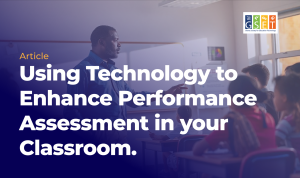
GSET Blogs
The Teacher and AI: How a Teacher’s Knowledge Shapes AI Use in the Classroom.
Inspired by an early career teacher at Babile in the Upper West region of Ghana.

In the ever-evolving landscape of education, Artificial Intelligence (AI) stands as a beacon of innovation, offering intriguing possibilities and more that are yet to be fully realized. As we delve into the space of AI in Education (AIED), we’re met with a plethora of opportunities to enhance the teaching and learning process. While the discourse surrounding AI’s role in education continues to spread in all nooks and crannies of the educational sector and other sectors alike, it’s essential to navigate this territory with a nuanced understanding of its potential and implications.
In Ghana, the discussion around AI in Education is still in its infancy, with little concrete guidance provided to teachers and students alike. Despite this, teachers and students across the educational spectrum are eagerly exploring the myriad ways in which AI can be integrated into their learning environments. However, it is crucial to recognize that employing AI in education transcends mere utilization of technology; it requires a deliberate alignment with pedagogical principles and learning theories.
According to several schools of thought, AI has come to stay and we can only leverage it positively.
“If we continue blindly forward, we should expect to see increased inequality alongside economic disruption, social unrest, and in some cases, political instability, with the technologically disadvantaged and underrepresented faring the worst.” (Smith and Neupane, 2018, p. 12)
It is obvious that a lot of teachers and students are using AI tools blindly without paying attention to all the issues that come with it.
In the world of AI tools for education, two prominent categories emerge, as stated by TeachAI.org
Generative AI Tools: These innovative tools possess the ability to generate text, code, and various other forms of content autonomously. However, their utilization for completing assignments raises pertinent issues surrounding plagiarism. Examples include Chat GPT, Gemini AI and Adobe Firefly, which have garnered significant attention in educational settings.
Predictive AI Tools: These tools leverage advanced algorithms to analyze patterns in student data, thereby forecasting outcomes such as graduation readiness. While offering invaluable insights for educators to intervene proactively, they necessitate scrutiny to mitigate potential biases in their outputs.
Among these AI tools, ChatGPT emerges as a frontrunner in classrooms, captivating both teachers and students alike. Yet, as we harness its capabilities, it’s imperative to reflect on the responsible use of such technology. Do we blindly trust the content generated by ChatGPT, or do we subject it to rigorous review and scrutiny?
Delving deeper, understanding prompt engineering becomes paramount. Understanding of this practice enables educators to shape the output of AI tools like ChatGPT to align seamlessly with their instructional objectives and learning outcomes.
According to AI and education guidance for policymakers, a document published by UNESCO in 2021, Teachers may be disempowered if they don’t learn about AI tools and there are no policies to guide its use.
For those eager to delve further into AI in Education, Platforms like the
International Society for Technology in Education (ISTE) provide invaluable insights,
https://iste.org/courses/artificial-intelligence-explorations-for-educators
AI in Education toolkits from TeachAI.org offer practical guidance for integrating AI into educational practices.
https://www.teachai.org/toolkit
Additionally, websites such as AI for Education.io offer a wealth of resources and research to deepen one’s understanding of this transformative intersection of technology and pedagogy.
https://www.aiforeducation.io/ai-course
As we navigate this dynamic landscape, let’s approach the integration of AI in education with curiosity, critical thinking, and a steadfast commitment to fostering meaningful learning experiences for all. Together, let’s embark on a journey of exploration and innovation in the pursuit of educational excellence.
More Posts


The Gaps In The Ongoing Implementation Of The Standard-Based Curriculum

Beyond The Screen: Rethinking EdTech as a Timeless Learning Continuum

Managing Difficult Questions during Lessons- The Place of Digital Learning for Teachers

